Rogozarski Ik-3
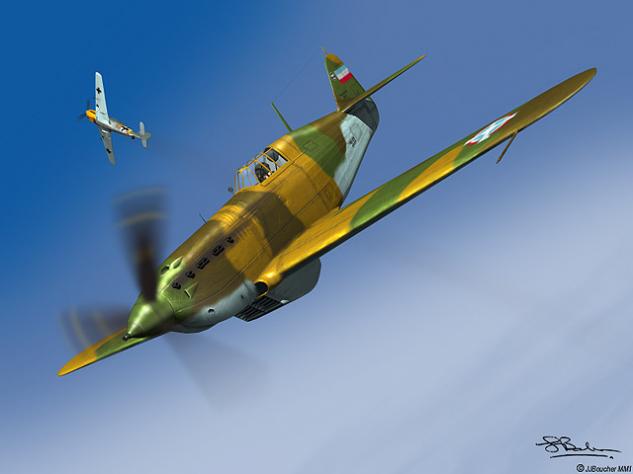 © Jerry Boucher - The Virtual Aircraft Website
© Jerry Boucher - The Virtual Aircraft Website
Le Rogožarski IK-3 était un chasseur monoplace Yougoslave monoplan à aile basse dessiné par Ljubomir Ilić et Kosta Sivčev. Il succédait au chasseur IK-1/IK-2.
The Rogožarski IK-3 was a Yugoslav low wing monoplane single seat fighter designed by Ljubomir Ilić and Kosta Sivčev. It was a successor to the IK-1/IK-2 fighter.
Développement - Development
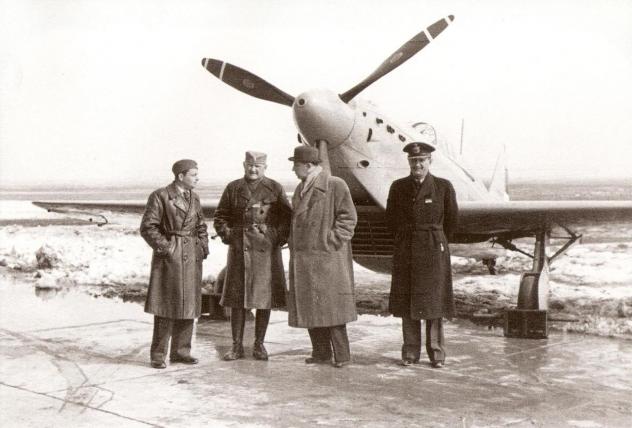 Rogozarski IK-3 n°2
Rogozarski IK-3 n°2
Concepteurs du IK-3 et officiers yougoslaves devant le IK-3 n°2
Designers of the IK-3 and Yugoslav officers in front of IK-3 n°2
Photo : auteur inconnu - author unknown
Avec l'aide de l'ingénieur Slobodan Zrnić, le développement démarra en 1936 dans le plus grand secret. Les essais en soufflerie (soufflerie Eiffel à Paris) furent menés à bien en France. Le projet fut ensuite soumis au Ministère de l'Air Yougoslave qui approuva la fabrication d'un seul prototype en mars 1937. La construction de l'IK-3 fut assignée à Rogožarski A.D. à Belgrade.
Assisted by Ing. Slobodan Zrnić, the development began in 1936 under strict secrecy. Wind tunnel testing work (Eiffel wind tunnel in Paris) was carried out in France. The project was then submitted to the Yugoslav Air Ministry, who approved the construction of a single prototype in March 1937. Construction of the IK-3 was assigned to Rogožarski A. D. in Belgrade.
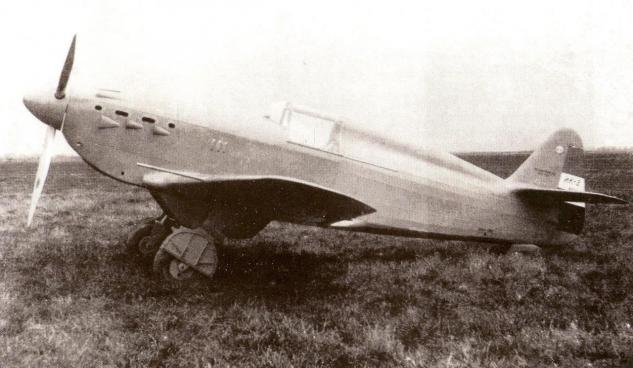 Photo : auteur inconnu - author unknown
Photo : auteur inconnu - author unknown
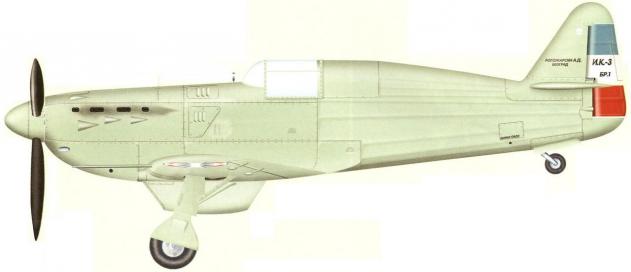 © Srecko Bradic - www.letletlet-warplanes.com
© Srecko Bradic - www.letletlet-warplanes.com
Rogozarski IK-3 n°1
Prototype, détruit le 19 janvier 1939. Prototype, destroyed on 19th January, 1939
Le prototype vola pour la première fois au printemps 1938. Il était motorisé par un moteur Hispano-Suiza 12Y-29 en ligne de 890 CV (664 kW) au décollage et 920 CV (686 kW) à 3600 m d'altitude (11 810 pieds). Le prototype était armé d'un canon Hispano-Suiza HS 9 de 20 mm et de deux mitrailleuses Darne de 7,7 mm montées sur le capot (similaire au Morane Saulnier MS 406).
The prototype first flew in the spring of 1938. It was powered by a Hispano-Suiza 12Y-29 in line engine rated at 890 hp (664 kW) for take-off and at 920 hp (686 kW) at 11,810 feet (3600 m) altitude. The prototype was armed with one 20 mm Hispano-Suiza HS 9 cannon and two 7.7 mm Darne machine guns mounted over the engine (similar to Morane-Saulnier MS 406).
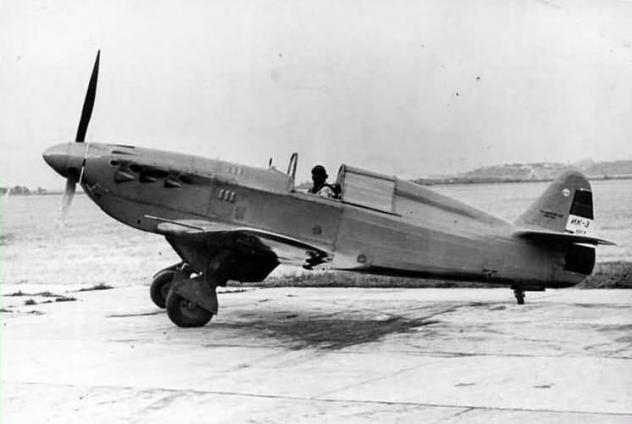 Rogozarski IK-3
Rogozarski IK-3
Premier vol du prototype, 14 avril 1938 (pilote : Capitaine Milan Bjelanovic)
Maiden flight of prototype, 14th April, 1938 (pilot : Captain Milan Bjelanovic)
© Srecko Bradic collection - www.letletlet-warplanes.com
L'avion avait un train rétractable (modèle Messier). Six pilotes d'essais essayèrent le prototype avant que l'avion ne soit détruit dans un accident fatal le 19 janvier 1939 (le pilote, le capitaine Milan Pokorni fut tué). L'enquête relative à l'accident qui s'en suivit ne révéla pas de cause liée à l'avion et le Ministère de l'Air Yougoslave commanda une production initiale de douze avions. Six furent livrés en mars 1939 et six en juillet.
The aircraft had a retractable landing gear (Messier design). Six test pilots flew the prototype before the airplane was destroyed in a fatal crash on January 19, 1939 (the pilot, Captain Milan Pokorni was killed). The subsequent accident investigation could not find an aircraft-related cause for the accident, and the Yugoslav Air Ministry ordered an initial production lot of twelve aircraft. Six were delivered in March, 1939 and six others in July.
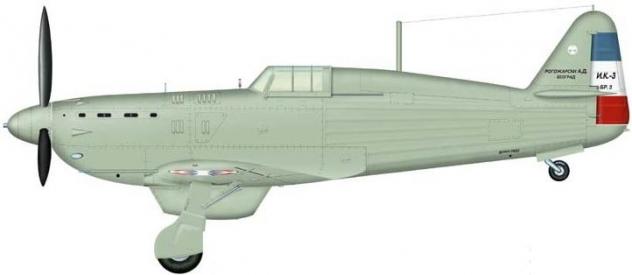 Rogozarski IK-3 n°2 (n/c 2152)
Rogozarski IK-3 n°2 (n/c 2152)
Premier exemplaire de la série initiale, hiver 1939/1940 - First unit of the initial series, winter 1939/1940
© Srecko Bradic - www.letletlet-warplanes.com
Des changements furent effectués sur le modèle de production de l'IK-3 : modification du système de glissière de la canopée, pare-brise blindé, utilisation d'un moteur Tchèque (Avia H.S. 12Ycrs) à la place du moteur Hispano-Suiza 12Y29. Les premiers IK-3 furent livrés à l'été 1940 à une escadrille expérimentale. L'avion fut jugé très manœuvrable et facile à entretenir. Une commande de 25 autres avions fut ordonnée et la production planifiée chez Rogožarski ainsi qu'en Turquie (sous license).
Several changes were added to the production version of the IK-3 : modification of the rearward-sliding canopy enclosure system, bulletproof glass into the windshield, use of a Czech-built engine (Avia H.S. 12Ycrs) instead of the Hispano-Suiza engine. The first IK-3s were delivered in the summer of 1940 to an experimental fighter squadron. The aircraft was found very maneuverable and maintainable. Another order for 25 aircrafts was placed and the production planned at Rogožarski but also in Turkey (under license).
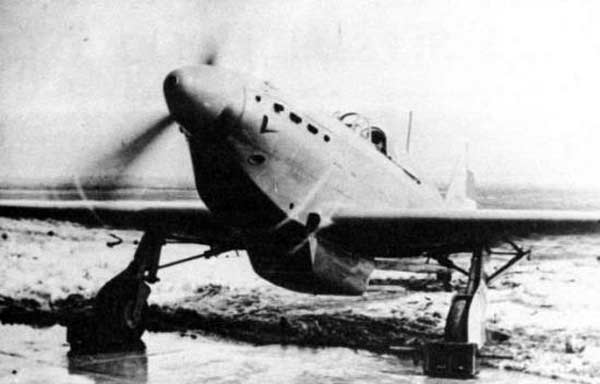 Rogozarski IK-3 - Photo : auteur inconnu - author unknown
Rogozarski IK-3 - Photo : auteur inconnu - author unknown
Mais la production de ce second lot fut à peine commencée que l'Allemagne envahit la Yougoslavie le 6 avril 1941. Des améliorations moteurs ont également été étudiées (avec les moteurs Hispano-Suiza 12Y-51, Daimler-Benz DB 601A, Rolls-Royce Merlin III) ainsi qu'une autre version de chasseur : le IK-5 avec deux moteurs HS 12Y. Mais ces développements stoppèrent avec l'invasion allemande.
However, production of the second batch had just started when Germany invaded Yugoslavia on April 6, 1941. Engine improvements were also studied (engines Hispano-Suiza 12Y-51, Daimler-Benz DB 601A and Rolls-Royce Merlin III) as well as another fighter version : the IK-5 with two engines HS 12Y. But these developments stopped with the German invasion.
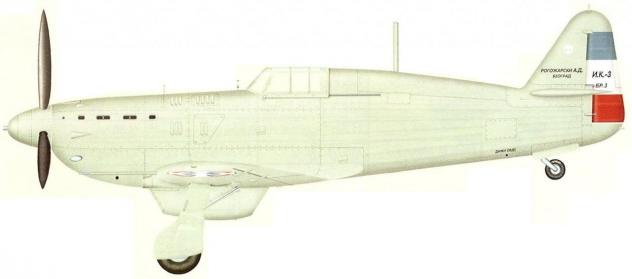
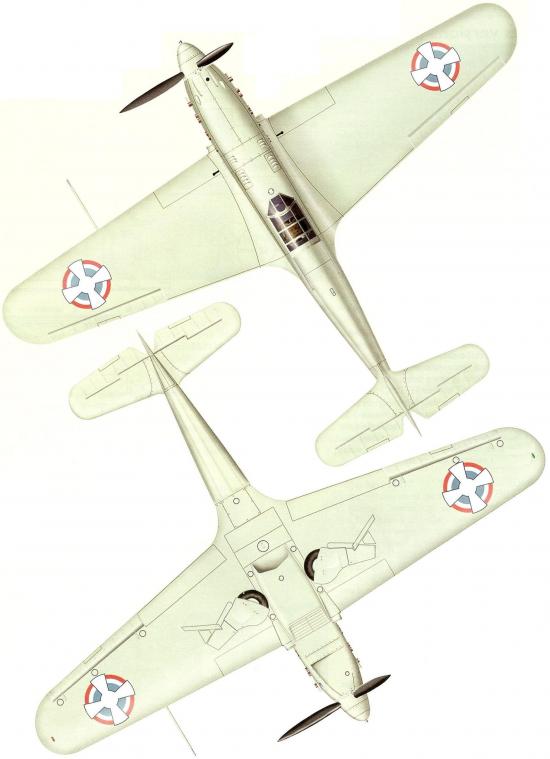
Rogozarski IK-3 n°3 (n/c 2153)
51ème groupe de chasse indépendant, mi-1940 - 51st independant Fighter Group, mid-1940.
© Srecko Bradic - www.letletlet-warplanes.com
Fiche technique - Technical data
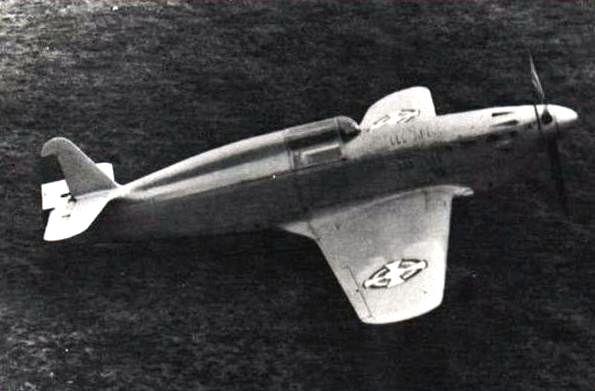
Rogozarski IK-3 n°1 - Photo : auteur inconnu - author unknown

Les versions - Variants
Au début, les IK-3 avaient comme inscription (en noir) le type d'avion (I.K.-3) et un numéro de production ou c/n (BR.x) sur le gouvernail. Plus tard, seul le c/n était appliqué. Puis le Vojnoevidencijski broj (VE-BR) ou numéro d'immatriculation de l'armée de l'air fut inscrit, en noir, à l'arrière du fuselage. Au début, les c/n étaient lié au VE-BR, puis après la perte du BR-6, les VE-BR furent avancés d'un chiffre à partir du BR-7.
At the beginning, IK-3 had for registration (in black) the type of aircraft (I.K.-3) and a construction number c/n (BR.x) on the rudder. Later, only the c/n was applied. Then the Vojnoevidencijski broj (VE-BR) or Air Force registration number was applied, in black, on the rear part of the fuselage. The first c/n were correlative to the VE-BR, but after the loss of BR-6, the VE-BR was moved one number forward, starting with the BR-7.
Les immatriculations des IK-3. The IK-3s serials :
br.1 - 2151
br.2 - 2152
br.3 - 2153
br.4 - 2154
br.5 - 2155
br.6 - 2156 (perdu le 3 septembre 1940 - lost on September 3, 1940)
br.7 - 2157 - changé en 2156 - changed to 2156
br.8 - 2158 - changé en 2157 - changed to 2157
br.9 - 2159 - changé en 2158 - changed to 2158
br.10 - 2160 - changé en 2159 - changed to 2159
br.11 - 2161 - changé en 2160 - changed to 2160
br.12 - 2162 - changé en 2161 - changed to 2161
br.13 - 2163 - changé en 2162 - changed to 2162
Prototype
Premier vol le 14 avril 1938. Verrière concave convexe. Armé d'un canon de 20 mm HS-9 et deux mitrailleuses Darne M-31 de 7,7 mm. Détruit le 19 janvier 1939 lors d'un vol d'essai. Moteur Hispano Suiza 12Y-29 V12.
Maidden flight on April 14th, 1938. Convex concave canopy. Fitted with a 20 mm cannon HS-9 and two machine guns Darne M-31 of 7,7 mm. Destroyed on January 19th, 1939 during a test flight. Engine Hispano Suiza 12Y-29 V12.
IK-3 n°2 à/to n°7 (c/n 2152 à/to 2157)
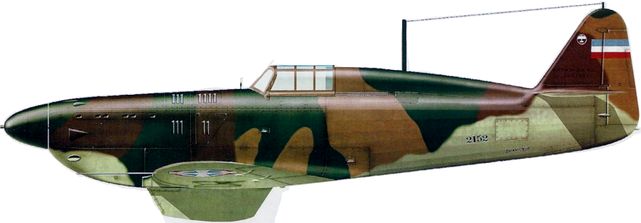
Rogozarski IK-3 n°2 (n/c 2152) -
51ème groupe de chasse indépendant, avril 1941 - 51st independant Fighter Group, April 1941
© Vincent Dhorne
Première série livrée en avril 1940. Verrière plus longue. Armé d'un canon Oerlikon FF/SMK M.39 E.M. de 20 mm et de deux mitrailleuses FN-Browning de 7,92 mm. Hélice Hamilton Standard. Moteur Hispano Suiza 12Y-29 fabriqué sous licence par Skoda-Avia.
First series delivered in April, 1940. Longer canopy. Fitted with a 20 mm Oerlikon FF/SMK M.39 E.M. cannon and two machine guns FN-Browning of 7,92 mm. Hamilton Standard propeller. Engine Hispano Suiza 12Y-29 manufactured under licence by Skoda-Avia.
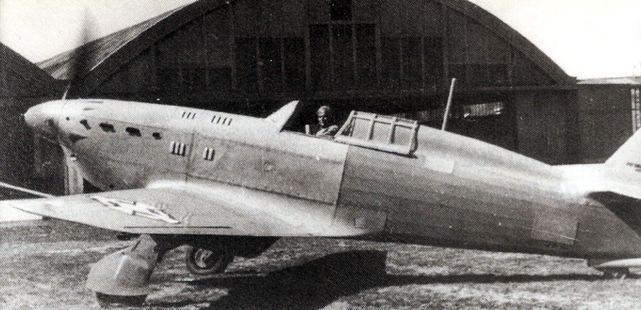
Rogozarski IK-3 n° 2154 - Zemun, 1940 - Photo : auteur inconnu - author unknown
IK-3 n°8 à/to n°13 (c/n 2158 à/to 2163 then 2157 à/to 2162)
Deuxième série livrée en août 1940. Carénage train d'atterrissage modifié. Hélice Chauvière.
Second series delivered in August, 1940. Fairing of landing gear modified. Chauvière propeller.
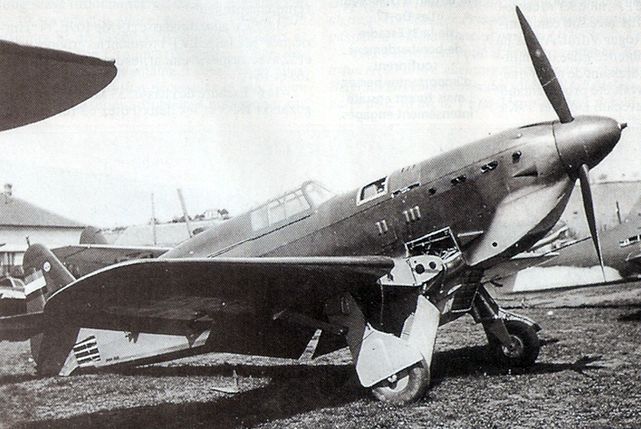
Rogozarski IK-3 n° 2162 - Zemun - Photo : auteur inconnu - author unknown
IK-3 n°7 (c/n 2157 puis/then 2156)
Utilisé comme prototype de la 2° série. Livré le 7 avril 1941. radiateur remodelé, capot moteur et verrière affinés. Plus rapide de 15 à 20 km/h.
Used as prototype for the 2nd series. Delivered on April 7th, 1941. Remodelled radiator, refined engine hood and canopy. Faster from 15 to 20 km/h..
IK-3/2
Projet de biplace d'entraînement abandonné avec l'arrivée du Me 108 Taifun.
Project of twin seat training aircraft, cancelled with the import of Me 108 Taifun.
IK-3-DB 601 A
Projet prévu pour faire face à la pénurie de moteurs HS 12 Y 29 en équipant l'IK-3 d'un moteur plus puissant. Abandonné avec le début de la guerre.
Project to face the lack of engine HS 12 Y 29 by fitting the IK-3 with a more powerful engine. Stopped by the beginning of the war.
IK-3 en opération - IK-3 in operation
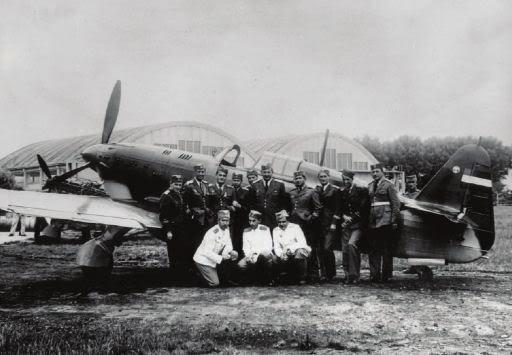
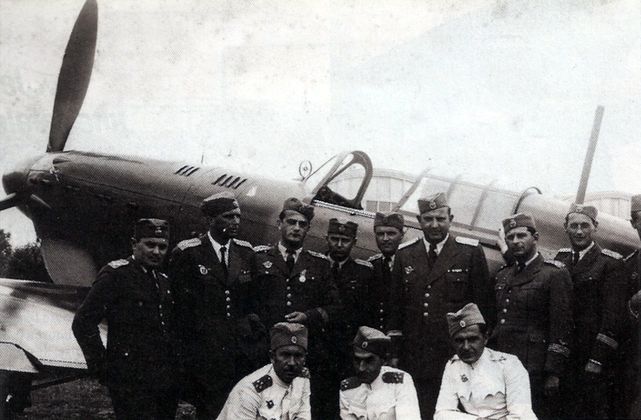
Rogozarski IK-3 n°4 (n/c 2154)
51ème groupe de chasse indépendant, Belgrade-Zemoun, avril 1941.
51st independant Fighter Group, Belgrade-Zemoun, April 1941.
Photo : auteur inconnu - author unknown
En avril 1941, sur les 12 premiers IK-3 fabriqués, un avion (n°6, n/c 2156) avait été perdu sur accident (chute dans le Danube le 6 Septembre 1940 lors d'un combat simulé - pilote Anton Ercigoj tué), quatre étaient en révision technique et un avion était utilisé pour les modifications du IK-3 Série II. Les 6 avions restant furent assignés aux escadrilles 161 et 162 du groupe de chasse 51 (3 IK-3 chacun).
In April 1941, on the first 12 manufactured IK-3, one aircraft (n°6, n/c 2156) had been lost on accident (fallen in the Danube on September 6th, 1940 during a simulated fight - pilot Anton Ercigoj killed), four were grounded for scheduled services and one aircraft was used for the modifications to Series II the IK-3. The 6 remaining aircrafts were assigned to 161st and 162nd fighter squadrons of the 51st Fighter group (3 IK-3 each).
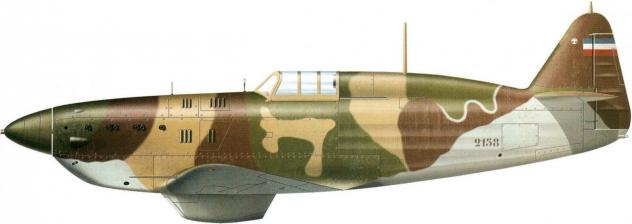 Rogozarski IK-3 n°9 (n/c 2158), Pilot : Potporucnik Eduard Banfic
Rogozarski IK-3 n°9 (n/c 2158), Pilot : Potporucnik Eduard Banfic
Premier exemplaire de la seconde série de production
First unit of the initial production series
© Jean-Marie Guillou
Le GC 51 faisait partie du 6èmerégiment de chasse de l'Armée de l'Air Royale Yougoslave. Les deux escadrilles étaient basées à l'aéroport de Zemun pour défendre Belgrade. Le 6 avril 1941, 5 IK-3, menés par le capitaine Savo Poljanec, attaquèrent tôt le matin les bombardiers allemands mais firent face aux Bf 109E de la JG 77.
The GC 51 was part of the 6th fighter regiment of Royal Yugoslav Air force. Both squadrons were stationed at Zemun airport to defend Belgrade. On April 6th, 1941, 5 IK-3, led by captain Savo Poljanec, attacked early in the morning german bombers but had to face Bf 109E of the JG 77.
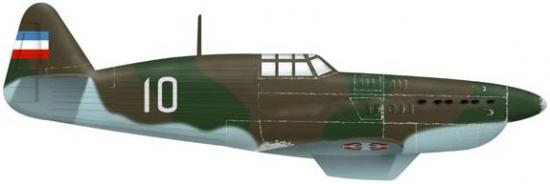 Rogozarski IK-3 n°10 (n/c 2159), 2nd Lt Dusan Borčić - © Chris Banyai-Riepl - History in Illustration
Rogozarski IK-3 n°10 (n/c 2159), 2nd Lt Dusan Borčić - © Chris Banyai-Riepl - History in Illustration
Poljanec se retrouva seul face à 27 bombardiers : il fit un Immelman, se retrouva sur le côté de la formation ce qui lui permit d'abattre un bombardier. Il fut ensuite attaqué par un groupe de Me 109 mais réussit à en abattre un avant d'être blessé et son avion sérieusement endommagé. D'abord ensemble, les sous-lieutenants Borčić et Bamfič se séparent pour trouver l'ennemi.
Poljanec faced alone 27 bombers : he made an Immelman to attack the group from the side which allowed him to shoot down a bomber. He was then attacked by a group of Me 109 but managed to shoot down one of them before being injured and his aircraft seriously damaged. At first together, the second lieutenant Borčić and Bamfić separated them to find the enemy.
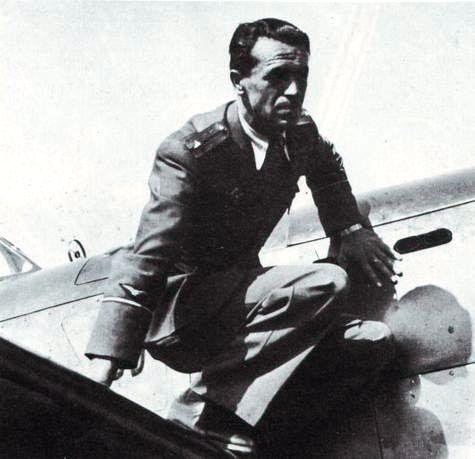
2nd Lt Dusan Borčić - Photo : auteur inconnu - author unknown
Au dessus de Zvezdara, Borčić repère 20 Dornier Do 17 et en abat un. Mais des Messerschmitt Me 109 le repèrent et l'attaquent : Borčić en abat un mais, à bout de munitions, est abattu et tombe dans le Danube. Bamfič, également attaqué par des Me 109 au dessus de Batajnica, s'écrase mais s'en sort indemne. Cinq victoires (sur 10 pour l'ensemble de l'aviation Yougoslave ce jour là) furent revendiquées mais Dusan Borcic fut tué à bord du n°10 n/c 2159 ainsi qu'un autre pilote. Cinq autres furent blessés.
Over Zvezdara, Borčić located 20 Dornier Do 17 and shot down one. But Messerschmitt Me 109s attacked him : Borčić shot down one but, out of ammunitions, was shot down and fell in the Danube. Bamfić, also attacked by Me 109s over Batajnica, crashed but escaped and was safe. Five victories (out of 10 for the whole Yougoslavian aviation that day) were claimed but Dusan Borčić was killed on board n°10 n/c 2159 as well as another pilot. Five other pilots were injured.
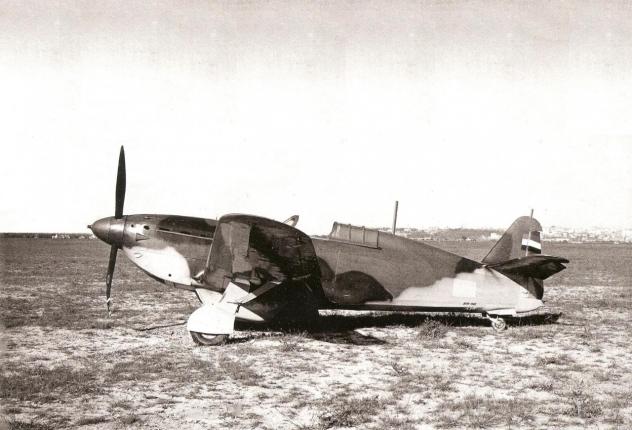 Rogozarski IK-3
Rogozarski IK-3
Exemplaire de la première série qui fit un atterrisage forcé lors de l'été 1940, piloté par Savo Poljanec, commandant de la 162e escadrille
Unit of the first series, which made a forced landing during summer 1940, flown by Savo Poljanec, commander of 162th squadron
Photo : auteur inconnu - author unknown
Après ce premier combat, 3 IK-3 seulement restaient en état de vol. Vers 10 heures, ils décollèrent de nouveau et abattirent deux Ju 87 et un Bf 109E. Le 7 avril, les 3 IK-3 revendiquèrent quelques victoires mais le 2nd Lt Milisav Semiz posa son IK-3 très endommagé et le changea pour un IK-3 neuf (le prototype de la seconde série d'IK-3, plus rapide).
After this first fight, only 3 IK-3 were airworthy. At about 10 am, they took off again and claimed two Ju 87 and one Bf 109E. On April 7th, the 3 IK-3 claimed some victories but the 2nd Lt Milisav Semiz landed its IK-3 seriously damaged and changed it for a brand new IK-3 (the prototype of the second series of IK-3, faster than the first one).
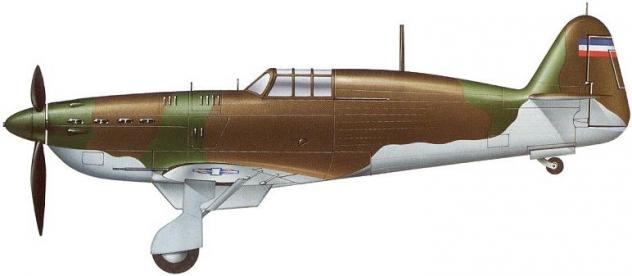 Rogozarski IK-3
Rogozarski IK-3
51ème groupe de chasse indépendant - 51st independant Fighter Group
artiste inconnu - artist unknown - source : http://wp.scn.ru
Le 11 avril fut le dernier jour de combat : M. Semiz revendiqua un Bf 110 C-4b, Todor Gojić et Dusan Vujičić un Ju 87 chacun.Certaines sources parlent d'un total de 11 victoires pour les IK-3 dont 4 par le Flight Sergeant M. Semiz. A l'issue des combats, les trois appareils survivants furent brûlés dans la nuit du 11 au 12 avril sur le terrain de secours de Veliki Radnici (avec 8 Me 109 et 1 Ikarus Ik-2). La Yougoslavie capitula le 17 avril.
April 11th was the last day of fight: M. Semiz claimed one Bf 110 C-4b, Todor Gojić and Dusan Vujičić one Ju 87 each. One source claims for a total of 11 victories for the IK-3 including 4 by the Flight Sergeant M. Semiz. At the end of the engagements, the three surviving aircrafts were burned during the night of April 11th and 12th in the auxiliary airfield of Veliki Radnici (with 8 Me 109 and 1 Ikarus Ik-2). Yougoslavia surrendered on April 17th.
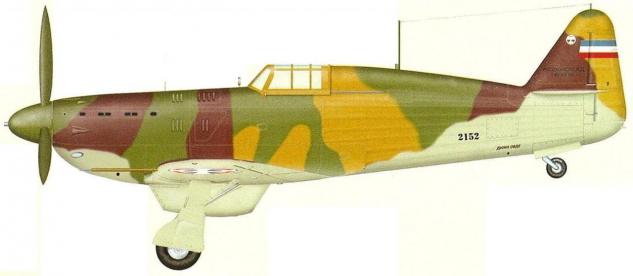
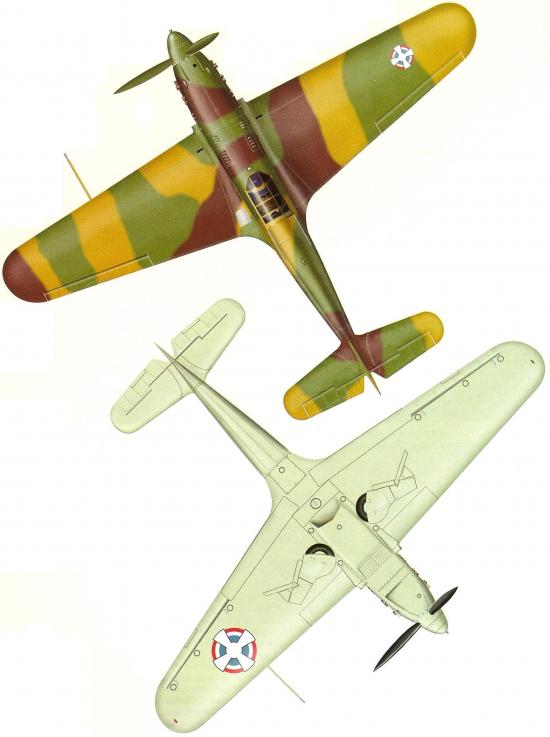
Rogozarski IK-3 n°2 (n/c 2152) -
51ème groupe de chasse indépendant, avril 1941 - 51st independant Fighter Group, April 1941
© Srecko Bradic - www.letletlet-warplanes.com
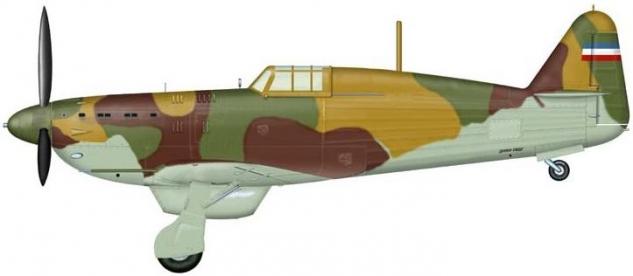
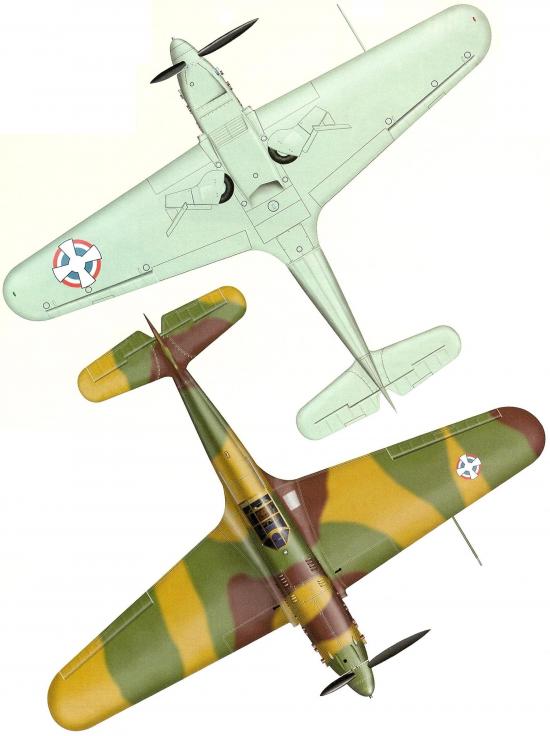
Rogozarski IK-3
Première série, 51ème groupe de chasse indépendant Yougoslave, printemps 1940
First series, 51st independant Yougoslavian Fighter Group, Spring, 1940
© Srecko Bradic - www.letletlet-warplanes.com
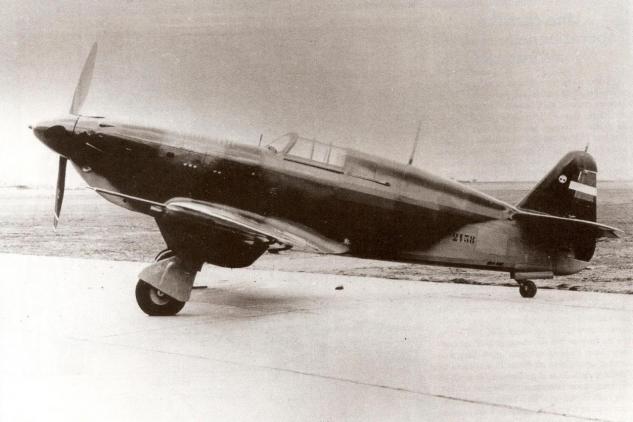 Rogozarski IK-3 n°9 (8 ?) (c/n 2158)
Rogozarski IK-3 n°9 (8 ?) (c/n 2158)
auteur inconnu - author unknown - source : The History of Flight

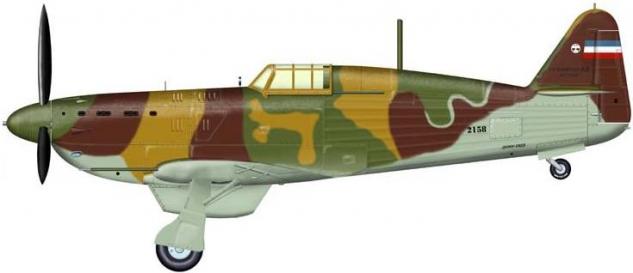 Rogozarski IK-3 n°9 (c/n 2158) - Pilot : Potporucnik Eduard Banfic
Rogozarski IK-3 n°9 (c/n 2158) - Pilot : Potporucnik Eduard Banfic
Premier exemplaire de la seconde série de production
First unit of the initial production series
© Srecko Bradic - www.letletlet-warplanes.com
Deux IK-3 auraient été capturés par les allemands (un codé GP+IK et l'autre 5+7) et au moins un des deux a été testé au centre d'essai de Rechin.
Two IK-3 were probably captured by the Germans (one registered GP+IK and the other 5+7) and one of them at least was tested at the Rechin test centre.
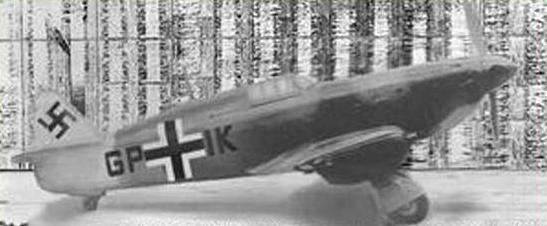
auteur inconnu - author unknown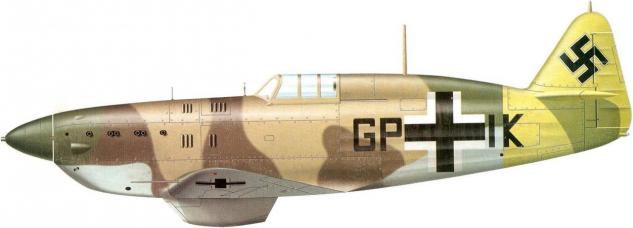 Rogozarski IK-3, Belgrade-Zemoun, 1941 © Jean-Marie Guillou
Rogozarski IK-3, Belgrade-Zemoun, 1941 © Jean-Marie Guillou
IK-3 en peinture - IK-3 artworks
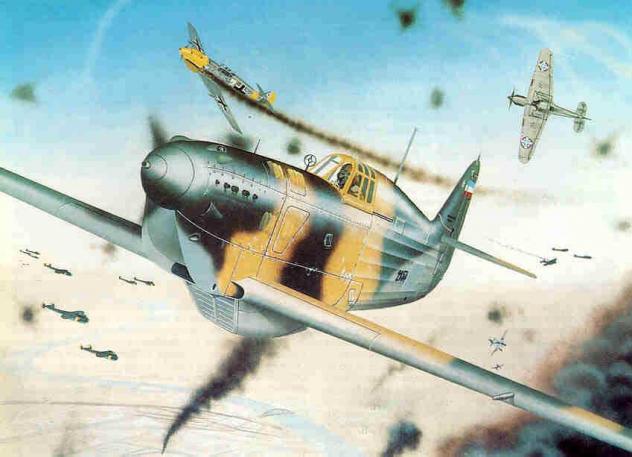 Artiste inconnu - Artist unknown
Artiste inconnu - Artist unknown
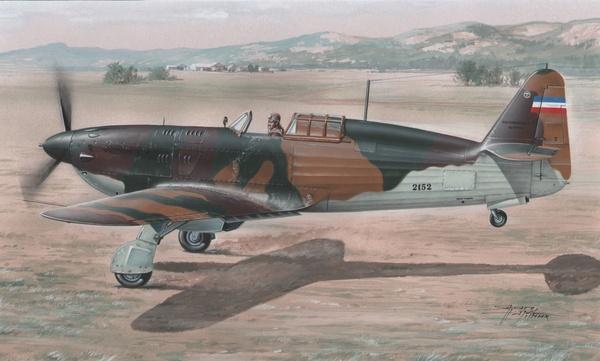 Artiste inconnu - Artist unknown
Artiste inconnu - Artist unknown
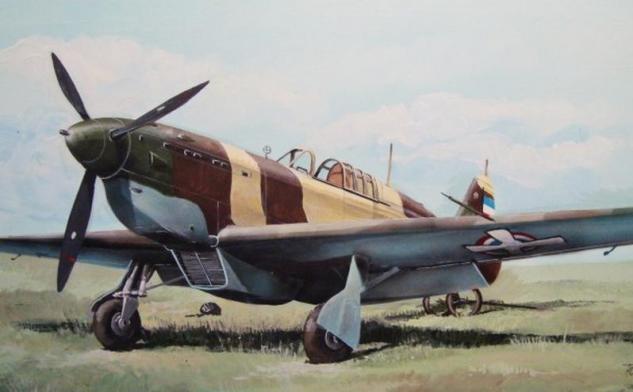 Artiste inconnu - Artist unknown
Artiste inconnu - Artist unknown
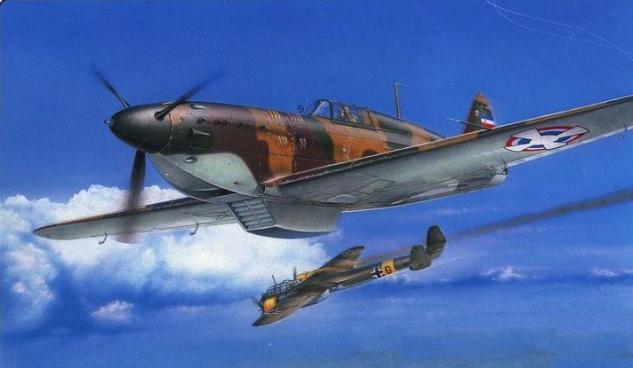 Artiste inconnu - Artist unknown
Artiste inconnu - Artist unknown
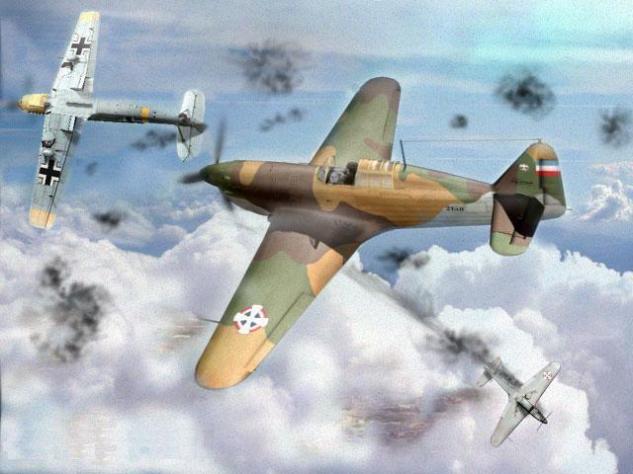 Artiste inconnu - Artist unknown
Artiste inconnu - Artist unknown
